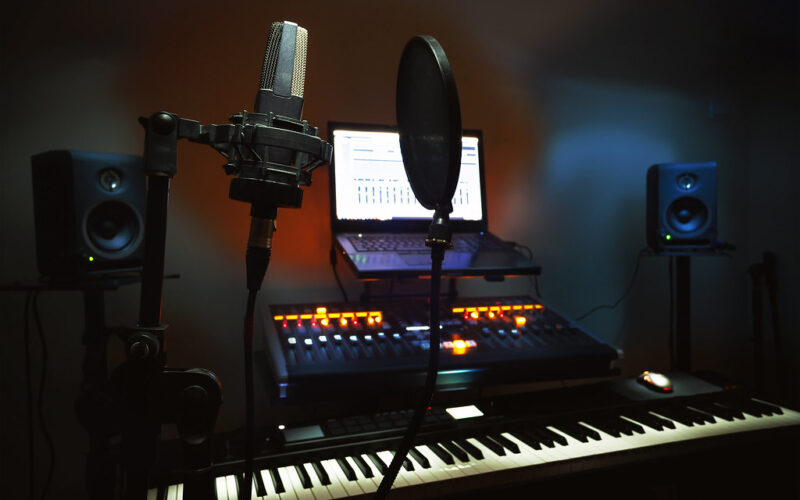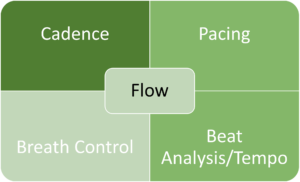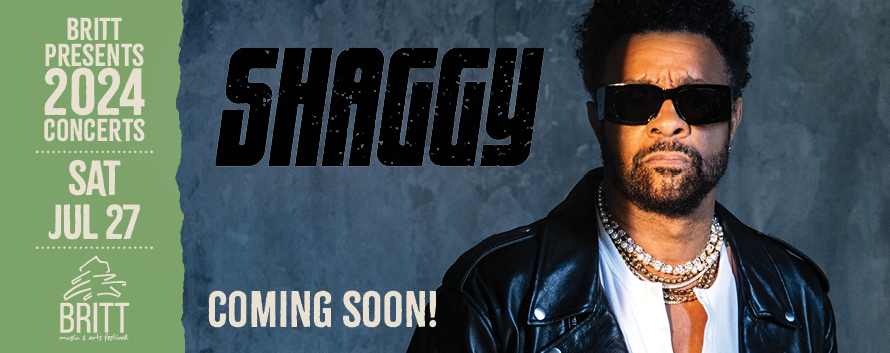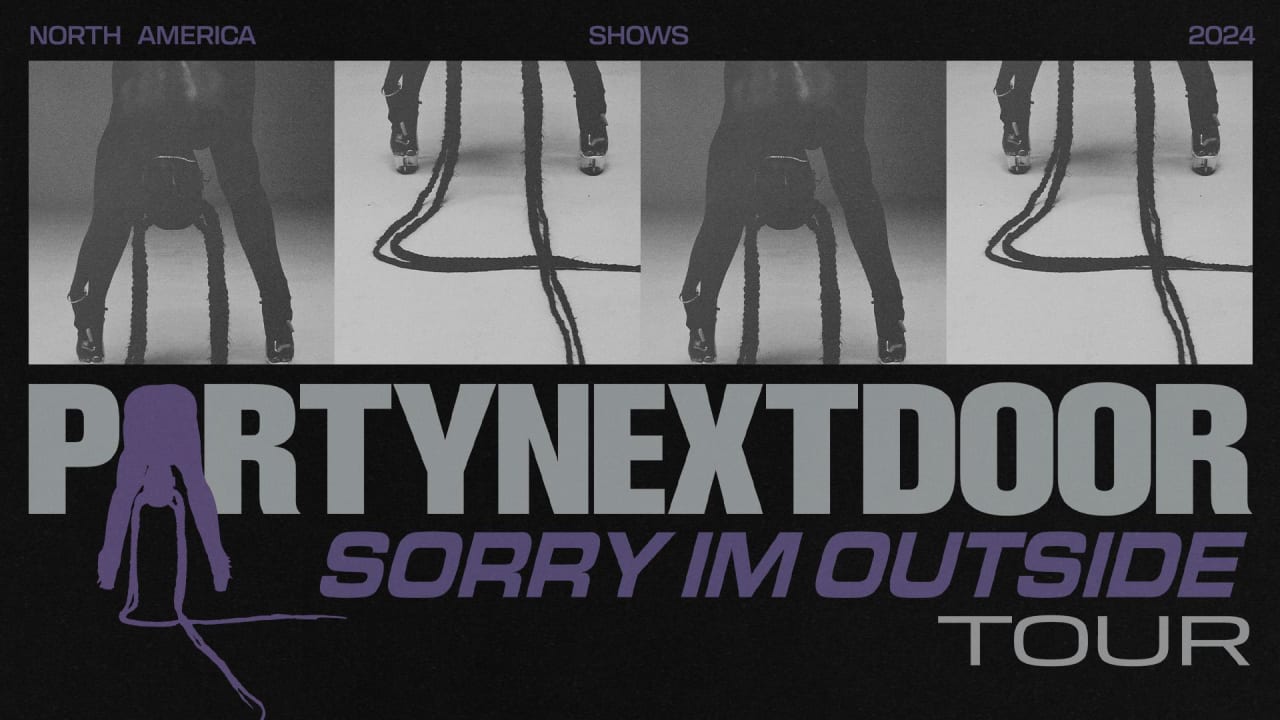I’ve always hated the term flow. It is a blanket term, unmeasurable, and a lazy way to describe a series of techniques that allow rappers to move naturally within the loose confines of an instrumental. While hearing “he/she got a mean flow”, is certainly a compliment, it assumes a point of view that to have dope flow is inherent, rather than a skill set that can be trained. It is certain that to rap well, one must be able to move lyrics effortlessly, aggressively, or distinctively in a manner that is shaped by the beat. However, ‘flow’ can absolutely be learned, trained, and broken down into a series of skills that can and should be leveled up by aspiring rappers.
We will use the “flow chart” above to breakdown the makeup of ‘flow’ and understand how one can improve it.
Beat Analysis/Tempo:
A vital place to begin when looking to improve ‘flow’ is understanding your beat. One of the most frequently discussed contrasts between rappers is whether it’s best to write lyrics and select a beat to fit them, or to select a beat, and write lyrics to a beat. As an artist, I very strongly fell within the second category. I believe that writing to a beat offers the best opportunity to fit vocals; taking the time to understand the intricacies of the beat (Intros, BPMs, Hook Segments, Bridges, Switch-Ups, etc.) Proponents of the other technique often feel that they can write lyrics more naturally without having the instrumental dictate the direction of their writing.
Either way, pre-vocal performance, it is vital to understand the essence of the beat before you record. When familiarizing myself with a beat, I often found it useful to clap with it, tap my feet, freestyle, sing, or even record a shitty ass take of nonsense so I could hear my vocals, hear how they mesh with the beat, and understand the rhythm and patterns that fit within its fabric.
When I would find instrumentals I really liked, I would often make playlists with them, and invite other artists to freestyle with me. Hearing other styles and vocal shapes would contour my idea of how I could spit, and influence my vision of how to push, turn and vary my vocals to keep them interesting and dynamic. I also found it helpful to research the BPM of the track, find music from mainstream artists I love with the same BPM, and study how they approach that tempo from a technical sense. You are not biting someone’s shit, swagger jacking, or whatever dumb term you want to apply to that thought by studying the greats. Painters, composers, poets, and artisans have done the same for centuries – study the greats, become a true student of the game, and you will be surprised how your ‘flow’ matures.
Breath Control:
Early in a musical career, whether you are an opera singer or a rapper, breath control is vital. Before you can naturally breath, you need to learn how to breath. There are countless resources available that will provide tips and tricks for you to optimize your breathing for singing, but one of my favorites (provided by Voicesinc.org) can be found here. Breath control is obviously directly correlated to ‘flow’, as you can only rap legibly, with proper pacing if you have the oxygen to get yourself there.
Cadence:
The definition of cadence is twofold, and both classifications pertain directly to ‘flow’. From Merriam Webster: 1a : a rhythmic sequence or flow of sounds in language the grand cadence of his poetry. b : the beat, time, or measure of rhythmical motion or activity The drill sergeant counted cadence. the steady cadence of the drums.
- The rhythmic sequence or ‘flow’ of sounds in language — This includes both modulation and inflection. Learn to bend your words and syllables to fit a bar. Learn to fit the rhythm of your phrasing to the beat. This is done, again, by listening, practicing and honing your craft.
- The beat, time or measure of rhythmical motion or activity – finding your cadence means understanding patterns of language, and sequences of rhymes. Do not rely solely on end rhymes. Internal rhyme, or “multies” mean a series of rhymes that do not only end a line, present harmonious sound throughout a line.
In my opinion, J.I.D has just about the best cadence in the game right now, and superb pacing, often building slowly into breakneck flow:
Pacing:
Perhaps the most important lesson on ‘flow’ that I can impart is the importance of pacing. The most significant period of artistic growth I experienced as a rapper is when I realized I did not need to fill every second of the instrumental with lyrics. Learn the power of space, let your instrumental carry the song in places. You will be surprised how potent your silence can be.
Pacing also refers to your ability to change tempo throughout a track. Using the same ‘flow’ from start to finish becomes repetitive and boring. Finding ways to constantly change your tempo can drastically improve your song from both a sonic & lyrical perspective.
Stay tuned to Todayshiphop.com as we will continue to outline strategies for independent artists to progress their careers, both technically and from a business perspective. We are always looking for independent artists to feature.
by Jack Carenza



















6 thoughts on “Dissecting Flow for Indie Rappers”